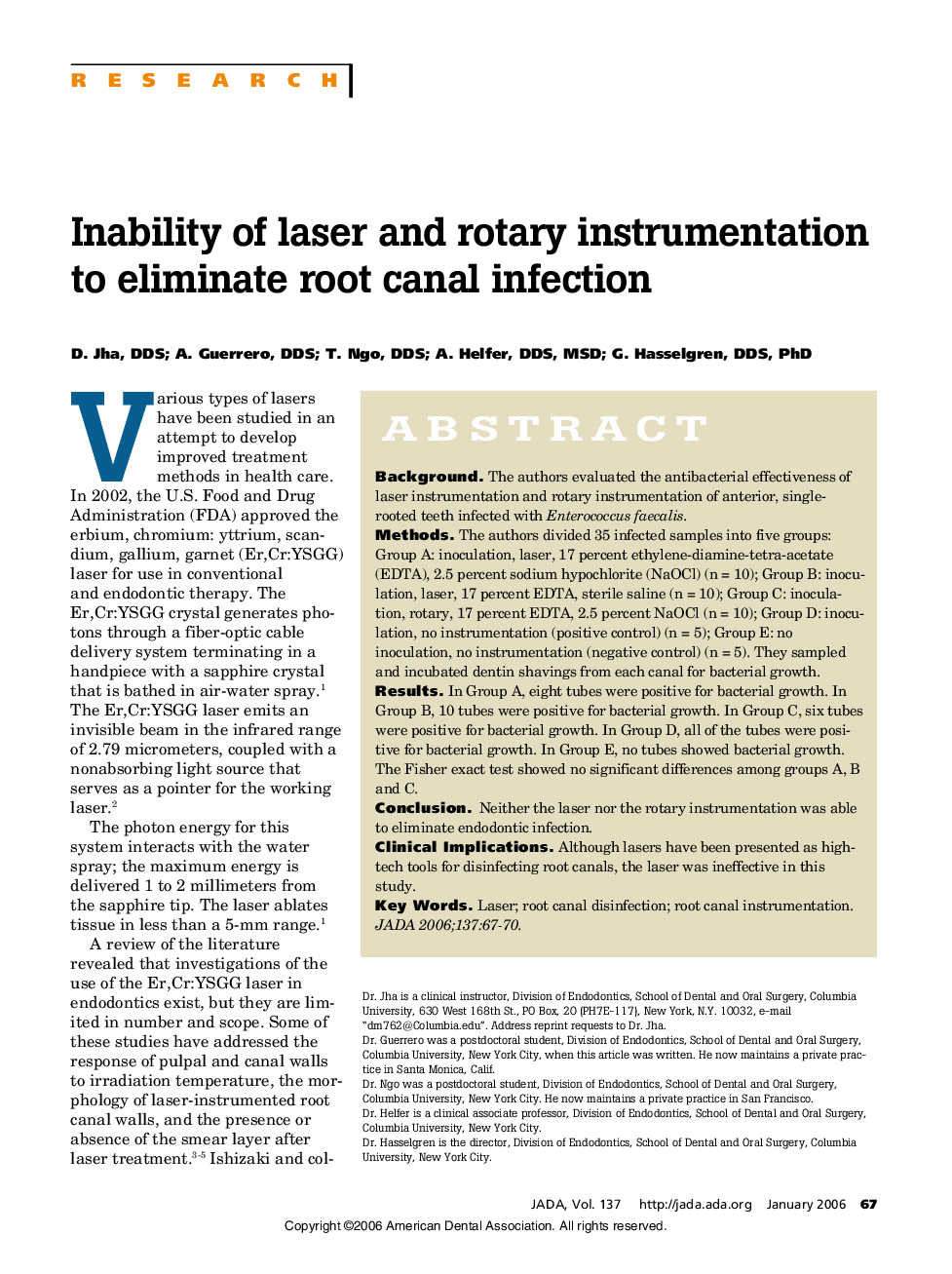| کد مقاله | کد نشریه | سال انتشار | مقاله انگلیسی | نسخه تمام متن |
|---|---|---|---|---|
| 3139943 | 1585105 | 2006 | 4 صفحه PDF | دانلود رایگان |

ABSTRACTBackgroundThe authors evaluated the antibacterial effectiveness of laser instrumentation and rotary instrumentation of anterior, single-rooted teeth infected with Enterococcus faecalis.MethodsThe authors divided 35 infected samples into five groups: Group A: inoculation, laser, 17 percent ethylene-diamine-tetra-acetate (EDTA), 2.5 percent sodium hypochlorite (NaOCl) (n = 10); Group B: inoculation, laser, 17 percent EDTA, sterile saline (n = 10); Group C: inoculation, rotary, 17 percent EDTA, 2.5 percent NaOCl (n = 10); Group D: inoculation, no instrumentation (positive control) (n = 5); Group E: no inoculation, no instrumentation (negative control) (n = 5). They sampled and incubated dentin shavings from each canal for bacterial growth.ResultsIn Group A, eight tubes were positive for bacterial growth. In Group B, 10 tubes were positive for bacterial growth. In Group C, six tubes were positive for bacterial growth. In Group D, all of the tubes were positive for bacterial growth. In Group E, no tubes showed bacterial growth. The Fisher exact test showed no significant differences among groups A, B and C.ConclusionNeither the laser nor the rotary instrumentation was able to eliminate endodontic infection.Clinical ImplicationsAlthough lasers have been presented as high-tech tools for disinfecting root canals, the laser was ineffective in this study.
Journal: The Journal of the American Dental Association - Volume 137, Issue 1, January 2006, Pages 67–70